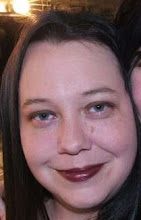
The title of the piece I will talk about today is "A Difficult Repair". The new shiny copper gear sits alone in the corner, trying to figure out exactly where he will fit in this complex collection of old rusty and bronze gears.
This panel was one of the black gessoed ones. (see previous post) I didn't have a clear idea of where I was going when I began this one, so I painted a wash of yellow paint over the black gesso and sprinkled four different types of salt over the wet paint. Once it was dry, i scrubbed all of the salt away and was left with a nicely speckled surface. The wet paint collects around the edges of the salt to create the speckles. I usually work on many paintings simultaneously, setting one aside to dry while i work on the next, because almost all of the art I do is done in layers. So, while I liked the speckled background, I wasn't really getting much inspiration for where to go next. After a couple of days of looking at it, I still wasn't getting anything, so I decided to cover it up. I had a piece of vintage dress pattern paper I had used to remove excess gesso on a piece a few days earlier. I do this a lot, instead of dabbing the excess paint off with paper towels, I will use a piece of found paper, which I then hang up to dry to use in another piece later. The random paint or gesso adds interest and texture and a delicious randomness that isn't possible to duplicate with a brush. Anyway, I glued this piece of gessoed tissue to the panel, letting wrinkles form wherever they wanted. The original texture is visible in a couple of places where there is no gesso. Once this layer was dry, I decided the piece was a little bright for my tastes so I painted a glaze of burnt umber light and GAC 100 medium over the whole thing. The paint collected around the wrinkles and gave the piece a wonderfully aged feel.
After the background was done, I searched through my found objects and came up blank. I didn't have enough of anything flat enough to glue down to fill the piece, and I really wanted to use gears. (I love gears!) I remembered buying a package of die-cut chipboard gears at our local paper arts store, Eclectica. I searched these down (I am really disorganized) and decided I wanted to rust them. The metal paints I use are fairly unpredictable, and a lot of times the absorbancy of the surface affects how the paint responds, so i took my selection of gears and prepared them all in different ways. One group I gessoed with black gesso, one group I sealed with matte medium, and one group I left unsealed. I painted them all with iron paint, and once that was dry, the rusting solution. The all rusted beautifully, but I don't really think all my prep work sealing them made much of a difference in this case. I took a few more gears and painted them with blackened bronze paint. Last, i took one lone gear and covered it with fine garnet gel to give it a little texture. Once that was dry, I copper-leafed it and the texture showed up beautifully under the copper.
I arranged the gears on the panel until I had them the way I wanted. I had layered them in three levels, so I took off the top two layers and glued the bottom layer of gears on with craft glue. Normally I glue everything on with gel medium, but it was so much easier to use the craft glue than a brush because it is very important not to get the gel on the rusted surface, it changes the appearance pretty dramatically. Once that layer was glued on, I weighted it with a heavy book and left it to dry. I repeated this step with the second and third layers of gears and it was done!
I could have done this piece on stretched canvas, but I found it was easier to glue the thick chipboard to a flat panel rather than the giving surface of canvas. It was also easier to weight down durning drying.


No comments:
Post a Comment